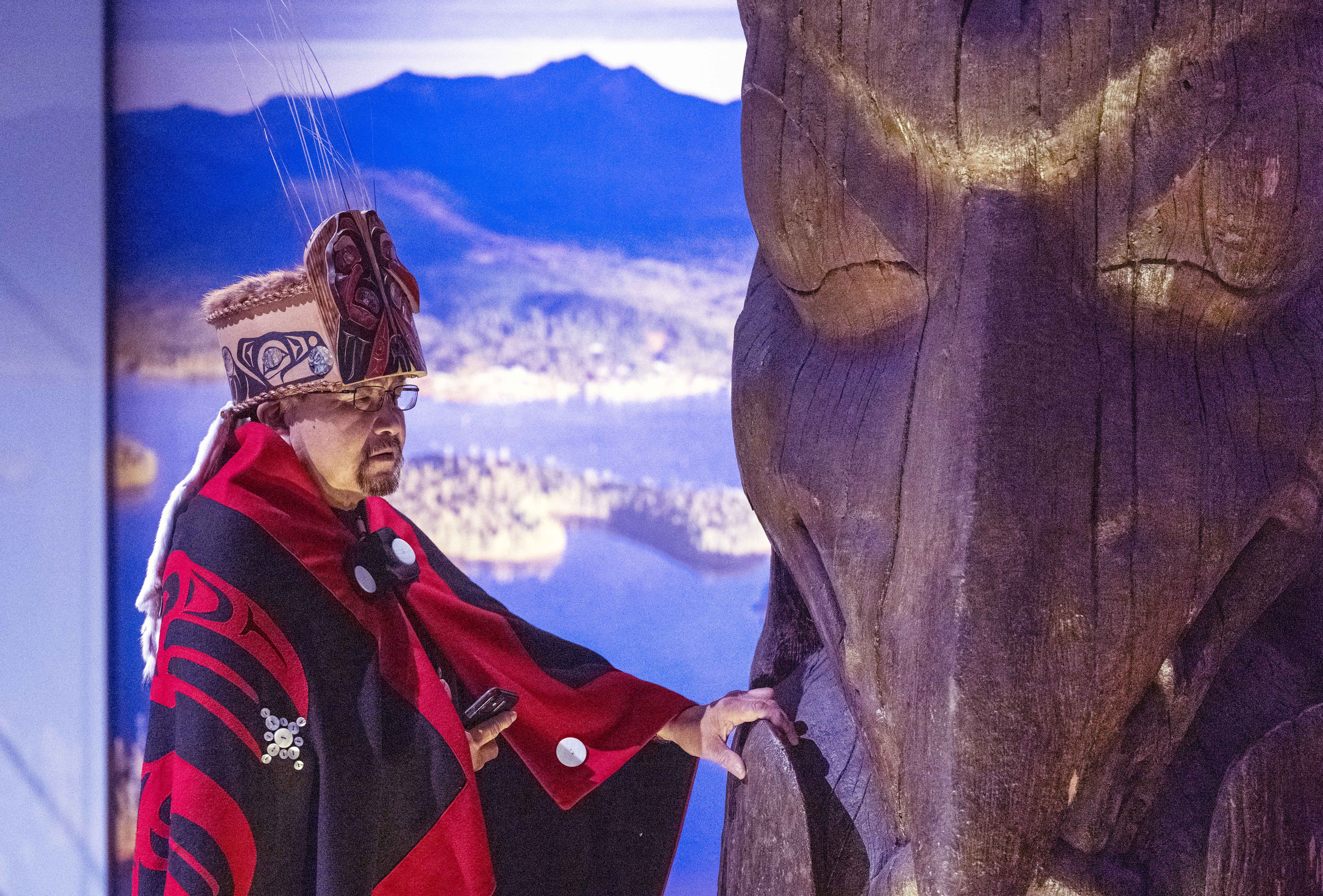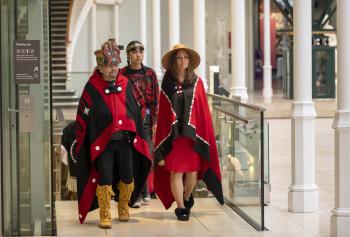Image Caption
Summary
Local Journalism Initiative Reporter
Windspeaker.com
The House of Ni’isjoohl and its community in northern British Columbia are joyfully preparing to welcome home their memorial pole, which has been in the National Museum of Scotland, Edinburgh for 94 years.
In an act expressing its commitment to the United Nations Declaration on the Rights of Indigenous Peoples, the National Museum of Scotland announced the return of the pole last December. Although the United Kingdom may think of it as a repatriation of an Indigenous artifact, for the Nisg̱a’a it is a rematriation.
Sigidimnaḵ’ Nox̱s Ts’aawit (Dr. Amy Parent) is Canadian Research Chair for Indigenous Education and Governance at Simon Fraser University. She explains how using the term rematriation instead of repatriation is decolonizing the process, while expressing the matrilineal nature of Nisg̱a’a society.
“It was a term I was using unconsciously,” said Parent. “And then I began to think about the implications of our pole, and who we were. Explaining to people and doing public presentations around us being a matrilineal society, it became evident that the term repatriation doesn't apply for us because we are a matrilineal society. And if we are really going to be able to practice some of those important teachings, then we also need to change our wording and challenge some of the colonialism and patriarchy that’s inherent in those terms.”
Recognizing that every Indigenous nation is different and that all have different social structures, the word “repatriation” might apply for others, says Parent. “But for our case, I feel that it doesn't apply to us, and that we need to reframe how we see this work.”
Joanna Moody of the House of Ni’isjoohl commissioned Nisg̱a’a master carver Oyee to carve the red cedar pole in honour of Ts'wawit, “a dear ancestor who died in war defending his family and nation.” That matriarch was Parent’s ancestral grandmother, and “she was a matriarch in our house. And she had that pole commissioned for our relative. And so to me, it's fitting that we would use the term ‘rematriation’ to bring it home.”
“And I do very much believe that it has been her spirit that's been guiding us and has led to us having this as successful rematriation, and which has allowed us to have the pole return home.”

As Sim’oogit Ni’isjoohl, Chief Earl Stephens, explains in press release, “this pole is alive with the spirit of our ancestors. After nearly 100 years, we are finally able to bring our dear relative home to rest on Nisg̱a’a lands. It means so much for us to have the Ni’isjoohl memorial pole returned to us, so that we can connect our family, nation and our future generations with our living history.”
For almost a century, this relative has been far from home, one of more than 12 million objects the museum has gathered, according to its website. The memorial pole has been on display in the “Living Lands” exhibit. The museum’s description is that “Living Lands presents objects made by [I]ndigenous peoples, from the North American Arctic to the deserts of Australia, and considers how landscape influences the way people lead their lives and what they believe.”
On Aug. 29, the pole will return home to B.C., with the Hli G̱oothl Wilp-Adoḵshl Nisg̱a’a, the Nisg̱a’a Museum, as its destination. The name translates to “The Heart of Nisg̱a’a House Crests,” a name that celebrates the importance of tribes and tribal crests in Nisg̱a’a society.
A delegation will travel to Edinburgh on Aug. 28 for a private ceremony to prepare the pole for the journey home. The 37-foot tall pole has a special crate to transport and protect it as it is lowered and taken out of the museum. Doors will be removed, and a busy city street closed down to make space for the pole to exit the museum.
“It’s going to be like shutting down Georgia Street in Vancouver,” said Parent.
Once outside, the pole will be airlifted home by the Canadian Armed Forces.
Arriving in Terrace, the pole will be moved in its crating onto a flatbed truck and be driven into the Nass Valley.
Passing turquoise blue waters and lava beds along a winding road, Parent says the pole will be met by a procession, private ceremony, and a feast to thank all those who have supported the journey home.
Local Journalism Initiative Reporters are supported by a financial contribution made by the Government of Canada.

